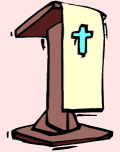The Cross and Eternity

Here is the 4th Lenten reading, centred around the Celtic Cross, kindly passed to us by Rev. David Linde *
Today, as we continue our Lenten-season meditations on symbolic representations of the cross of Jesus Christ, we consider the Celtic cross, a cross combined with a circle. As with many symbolic crosses, the Celtic cross has a long tradition and a variety of interpretations. One of the most common understandings of the circle in this symbol is that it represents eternity - an unbroken line with no beginning and no end. From this perspective the Celtic cross reminds us of the interface of time and eternity in the cross of Jesus.
The creeds summarize the biblical record when they say that Jesus Christ was crucified under Pontius Pilate. It was a historical event. A real cross, planted in real dirt, at a real location, on an actual date in history - that is the testimony of Scripture. "When the time had fully come," the Bible says, "God sent his Son, born of a woman, born under law, to redeem those under law" (Gal. 4:4-5). The cross happened in real time. But its causes stretched back further than a mob's anger and a governor's order. And its effects extended beyond the burial of a body and the regrouping of a band of followers. Both in its origins and its effects the cross touches eternity.
The roots of the cross go back to eternity past. Even before man had broken relationship with God by refusing to trust him and obey him, God had planned the event that would effect the healing of that relationship for all who would trust him in the future. "You were redeemed," says the Apostle Peter, "with the precious blood of Christ, a lamb without blemish or defect. He was chosen before the Creation of the world, but was revealed in these last times for your sake" (1 Pet. 1:18-20). The Son of God hung on the cross in time, but he had welcomed the cross from eternity.
If the roots of the cross reach to eternity past, the effects of the cross extend to eternity future. The mission of Jesus in dying was to offer himself as the sacrifice that would satisfy divine justice for the spiritual crimes of humans like us. Through his death, the life with God that was lost in Eden would be restored for those who trust him. This life would begin in real time and would last forever, transforming even physical death into resurrection. Jesus called it eternal life. He said, in reference to his impending death by crucifixion, "Just as Moses lifted up the snake in the desert, so the Son of Man must be lifted up, that everyone who believes in him may have eternal life" (John 3:14-15). This life consists in knowing God now (John 17:3), and experiencing his inexhaustible kindness forever and ever. The future vista of the cross was, in the words of Paul the Apostle, "that in the coming ages [God] might show the incomparable riches of his grace, expressed in his kindness to us in Christ Jesus" (Eph. 2:7).
Some 2000 years ago in Palestine, just outside Jerusalem, three men were executed by crucifixion. It was an actual day on the calendar, perhaps (as many scholars think) a day in April, AD 33. But eternity circled the middle cross that day. That crucifixion reached back, in its design, before human history. And it opened up, in its scope, all the ages to come.
Let us pray:
Heavenly Father, thank you for planning the cross, and our rescue from sin, from before the creation of the world. Thank you for the limitless bounty of your grace that we will enjoy for all eternity to come. Lord Jesus, thank you for welcoming the cross from eternity past, for enduring its suffering on an actual day in history, and for securing life for all eternity for those who trust you. Spirit of the living God, thank you for applying these realities to us in the actual journey and diary of our lives.
Amen.
